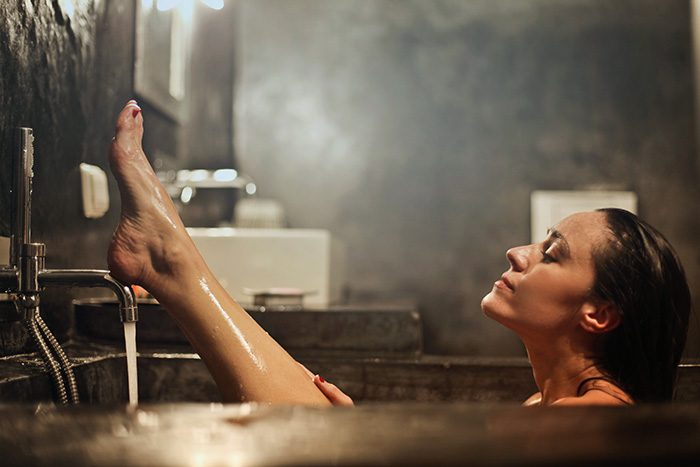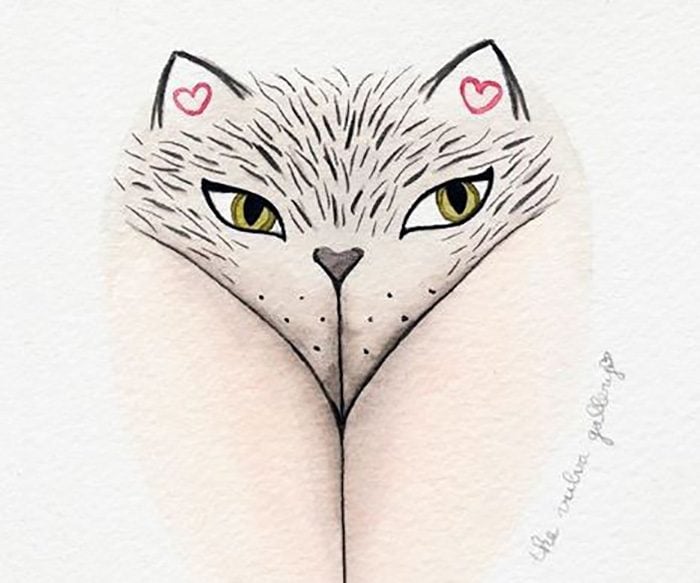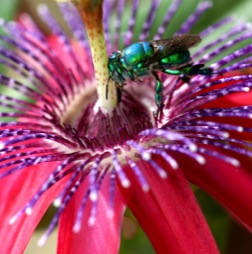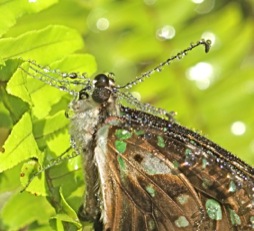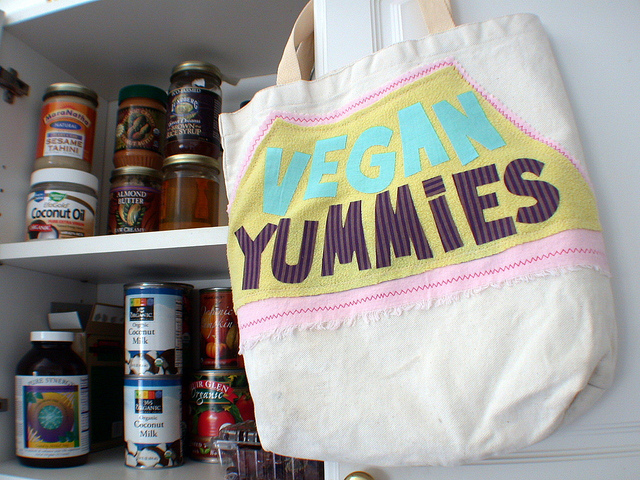I wiggled my undies down to my thighs and sighed.
Holding the camera just inches away from my crotch with one hand, I stabilized my shivering body with the other.
Legs spread apart or together?
Jeesh that’s blurry.
Oh God, way too close. That might as well be an abstract zoom of a beaver’s shoulder.
After fussing for at least 15 minutes, I settled on a photo. It was more of a “that will do” than a “that’s the one!”
I flopped down on my bed, belly first, fumbling the camera memory card into my laptop, I forgot to breathe while I clicked from folder to folder until…
There she was.
When the picture appeared on my screen I shuddered a little—mouth slightly agape in a way suggesting I just smelled poop—and let out a disgusted grunt.
“You can’t think about it too much, Steph. Just do it,” I whispered.
With a definitive click, I sent a photo of my genitals careening through cyberspace, across the world to a stranger I found on Instagram.
By definition, I was carrying out my parents’ absolute worst nightmare.
Before you kill me, dad, let me explain why a portrait of my vulva is floating around the internet:
“The Vulva Gallery” is a collection of paintings created by
Hilde Atalanta, an artist whose “work revolves around the search for identity and different forms of relationships, sexualities, and gender identities.” When I found her Instagram
account, I was immediately intrigued and terrified. It dawned on me that there was some disconnect in the relationship with my own self…down there.
After my first blushing glance at the pussy portraits online, I uncovered my own plea for body positivity and sexual health education. To say the least, I was lacking knowledge and comfort in both topics.
Seared in my memory were the words of my childhood best friend’s mother:
“Turn around and don’t look at each other when you change clothes. If you see any lady parts, you will go blind.”
And I remembered this every time I caught an accidental glimpse of myself in the mirror while undressing.
Whenever I showered, cleaning my own body, I refused to look down.
The first time I used a tampon, I was mortified to manipulate my anatomy in the way the mechanism needed me to, horrified that if I stared for too long I just might go blind.
Needless to say, I’ve spent most of my life feeling distanced from
the space between my legs.
I accepted that this area was not spoken of, and I did not dare question it—neither did my friends, parents, even educators.
Sure, I was well-versed in the basic details of the male and female reproductive system from my middle and high school classes, but never in my life was the word “vulva” meaningful. In fact, I was more comfortable not acknowledging this part of myself at all than giving it any name—let alone giving it a meaning.
This became apparent when I listened to a
TED Talk by Peggy Orenstein, “What young women believe about their own sexual pleasure.”
Peggy’s talk reminded me that female external genitalia have a name, a purpose, and a whole lot of
beauty. The term “vulva” is so often overlooked that some people with these body parts, including myself, do not refer to their anatomy by this name, nor do they consider these body parts aesthetically acceptable.
Much like Hilde, Peggy is concerned about the rise in popularity of
labiaplasty—a surgical procedure that amends the inner and outer labia—and why some women might be interested in this extreme process in the first place.
Why do we feel like our bodies don’t look right? Is there one specific way in which our sex organs should appear?
Hilde’s art screams, “Hell no!”
We are all so different, and we are all so beautiful. Nothing needs to change in the name of appearance. Ever.
In order to reach a space of body acceptance and eventual body positivity, we vulva owners need more opportunities to learn about our anatomy and embrace it.
Peggy reiterated a profound lack of sexual health education, and made clear that the female external genitalia is a gray area of the body altogether:
“…they see that internal diagram of a woman’s reproductive system—you know, the one that looks kind of like a steer head…and it always grays out between the legs. So we never say vulva, we certainly never say clitoris.”
I hope I’m wrong, but I might not be the only woman who has spent much of her life worried that if she explored the way these body parts look, she might lose her vision.
This must change.
The Vulva Gallery brought me hope that we can reach a place of acceptance and in turn, love the bodies in which we walk around. It’s fitting that Hilde’s collection is rich in diversity, demanding that the eye find no consistency, no pattern, no “normal,” or “ugly” among the beautiful paintings.
So, how did she find all these lady parts for The Vulva Gallery? The account portfolio includes a mix of Hilde’s educational illustrations and anonymous submissions from those who volunteered their own vulva for the collection. Via the trusting platform she created, Hilde brought a safe, respectful community to Instagram where followers actually reach out to her to request their vulva portrait be a part of the gallery.
How fucking beautiful is that?
In awe of my own desperate need for a more honest sexual health education and genuine body positivity—and inspired as hell by the stories shared already—I decided to send Hilde my story and a picture of my “V.”
Prior to finding The Vulva Gallery, I never felt uncomfortable with the appearance of my genitalia, mostly because I chose to avoid feeling anything toward that area at all. As soon as I pulled my underpants down and took a closer look, I realized how little I knew about my own body. I wanted that to change, and Hilde helped me to share a story, rather than keep a secret.
The moments following my photo submission were nothing short of terrifying, but in a beautiful way that told me I was growing out of an old story. I knew this story was safe in Hilde’s artistic hands.
My heart thumped just as wildly a few days later when I received a beautiful portrait in my email from Hilde. This time, when the photo of my vulva engulfed the screen, I greeted her with love, acceptance, and curiosity.
For how was she feeling all those years spent nameless, meaningless, and mistreated?
Perhaps loving voices like Hilde’s and Peggy’s can talk just one person out of changing their anatomy by means of extreme surgical intervention—or learn to accept their beautiful bodies as they are. If so, it was well worth the adrenaline rush I felt as I released my beautiful vulva into the online gallery.
Among all the other queen V’s, mine is now an educational opportunity for vulva owners everywhere.
We deserve to feel gorgeous “down there” no matter what—just the way we are.


